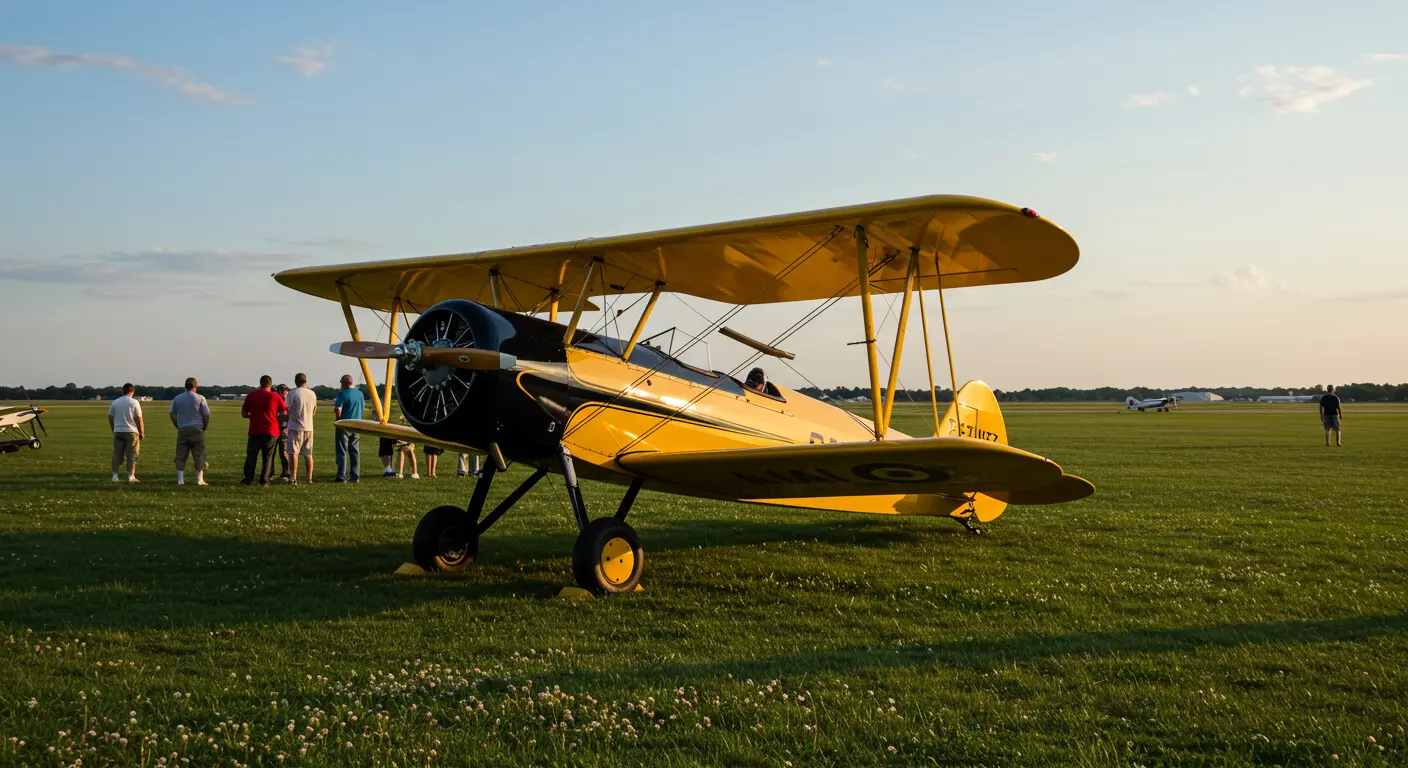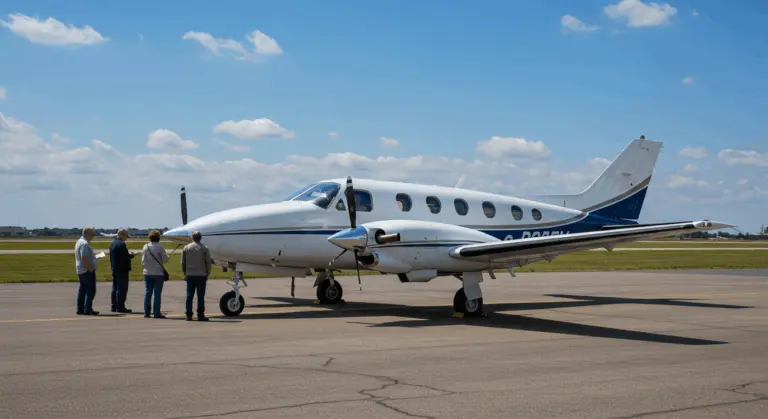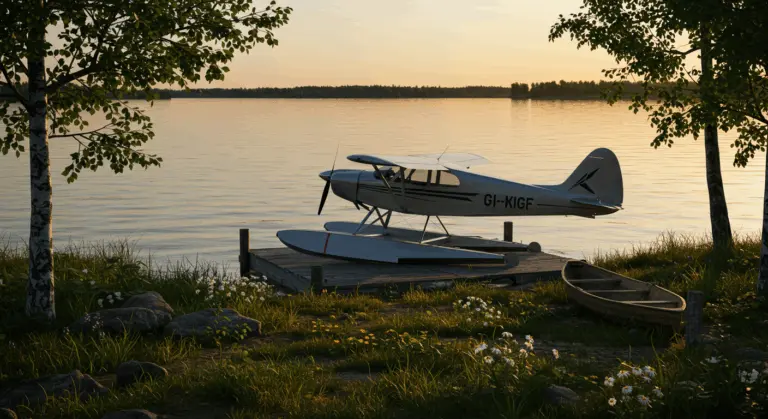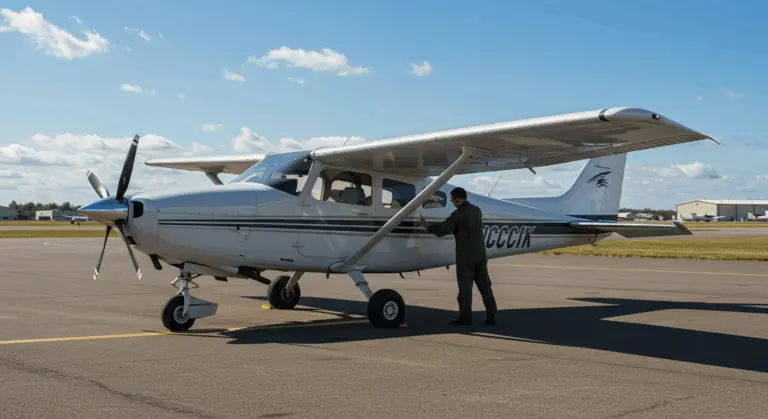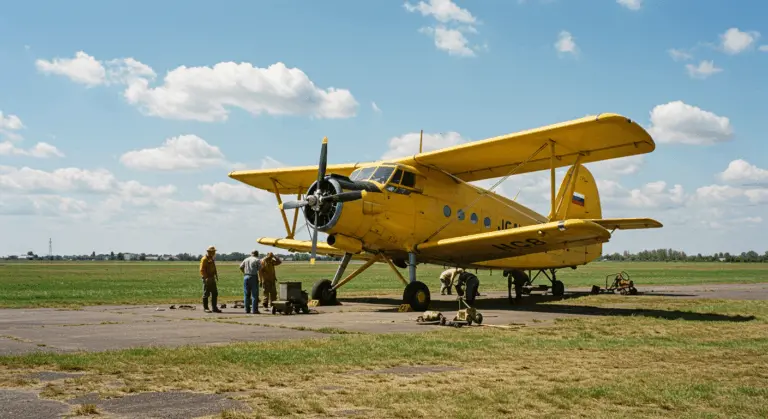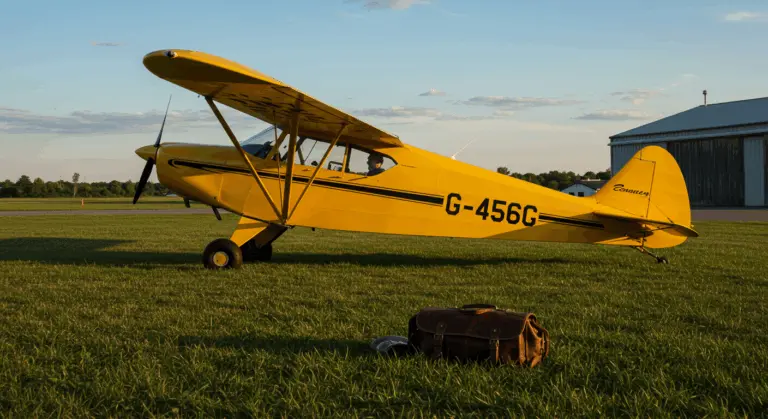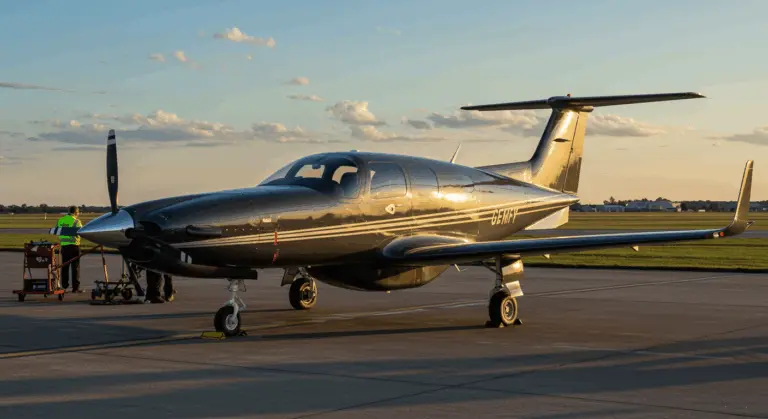Waco UPF-7 – Specifications, History, and Availability
Overview of the Waco UPF-7 Aircraft
The Waco UPF-7 stands as a remarkable piece of American aviation history, representing the pinnacle of Waco Aircraft Company’s F-series development. Introduced in 1940, this aircraft incorporated engineering refinements from the entire F-series lineage. This created What many pilots consider the most balanced and easiest to fly aircraft in the entire lineup.
With its distinctive staggered wings and strut-connected ailerons gracing both upper and lower panels, the UPF-7 maintained a classic biplane configuration. But it delivered significantly improved handling characteristics that set it apart from its predecessors.
| Specification | Value |
|—|—|
| Crew | 1 Pilot, 1 Passenger |
| Power plant | Continental W-670-6A radial (220 hp) |
| Max Speed | 128 mph |
| Cruise Speed | 114 mph |
| Range | 400 miles |
| Service Ceiling | 14,800 ft |
| Climb to 9,000 ft | 15 minutes |
| Length | 23 ft 1 in |
| Wingspan | 30 ft |
| Height | 8 ft 5 in |
| Wing Area | 244 sq ft |
| Empty Weight | 1,870 lbs |
| Gross Weight | 2,650 lbs |
The UPF-7’s standout feature is its exceptionally wide landing gear stance—the widest of any Waco aircraft. This design choice wasn’t merely aesthetic; it provided excellent ground handling characteristics and remarkable stability during takeoff and landing operations. The true center locking tail wheel further enhances its ground maneuverability, making it particularly well-suited for training purposes.
Many surviving UPF-7s have undergone careful restoration to current FAA standards while preserving their historical integrity. These comprehensive restorations typically encompass all-new wood structures, updated cockpit components, and thoroughly refurbished mechanical systems. This thorough approach lets these historic aircraft to maintain their Standard Airworthiness Certificates for continued operation.
Specifications of the Waco UPF-7
The UPF-7’s open cockpit design embodies the classic biplane aesthetic with graceful lines and proportions that captivate aviation enthusiasts. The cockpit layout balances simplicity with complete functionality, with essential flight instruments arranged for optimal visibility and access. Both front and rear cockpits feature identical basic controls, facilitating effective flight instruction.
Structurally, the UPF-7 uses mixed construction: steel tube fuselage with fabric covering, wooden wings, and metal cowling. This construction method was typical for the era, but Waco built it with exceptional care and skill. The aircraft’s fuel system includes strategically positioned tanks with sufficient capacity for its 400-mile range, while fuel sight gauges allow pilots to monitor consumption with precision.
History of the Waco UPF-7
The Waco UPF-7 appeared at a turning point in American aviation history. Production commenced in 1937 and continued through 1942, with Waco constructing approximately 600 units during these crucial years. The aircraft marked a significant advance from earlier F-series models, incorporating refinements and improvements gleaned from extensive operational experience.
The UPF-7’s development responded to the escalating demand for pilot training aircraft as global tensions mounted prior to World War II. Unlike its F-series predecessors, which typically featured three seats with two passengers positioned side-by-side in the front cockpit, the UPF-7 adopted a tandem seating arrangement. This configuration was specifically optimized for flight instruction—a smart choice.
The majority of UPF-7 production went to civilian flight training programs, with the aircraft becoming a cornerstone of the Civilian Pilot Training Program (CPTP). This ambitious government initiative, launched in 1939, aimed to rapidly expand the number of civilian pilots in the United States. The goal was strategic: create a substantial reserve of trained aviators who could potentially transition to military service if circumstances demanded. Most UPF-7s were delivered to CPTP flying schools nationwide, where they helped training thousands of future pilots.
Production of the UPF-7 ceased abruptly in 1942 as Waco redirected its manufacturing capabilities toward the war effort. The company pivoted to producing wooden troop-carrying gliders—a critical wartime necessity. This transition marked not only the end of F-series production but also the conclusion of Waco’s commercial aircraft manufacturing during the war years.
Operational History and Usage
The UPF-7’s greatest contribution came through the Civilian Pilot Training Program (CPTP), later renamed the War Training Service. This government-sponsored initiative trained over 435,000 pilots between 1939 and 1944—a staggering achievement. The UPF-7 was central to this enormous effort, serving as the backbone of primary flight training.
The aircraft’s robust construction and forgiving handling characteristics made it ideally suited for training purposes. It found the right mix: responsive enough to be genuinely engaging for student pilots, yet tolerant of the inevitable mistakes that come with learning to fly.
After World War II, many surplus UPF-7s transitioned to civilian ownership, finding new roles in:
-
Private flying
-
Crop dusting
-
Banner towing
-
Other utility applications
After the war, growing interest in vintage aircraft gave the UPF-7 found a new role in preserving aviation heritage. Surviving examples became prized possessions for collectors and museums alike, with many undergoing painstaking restoration to return them to their original splendor. Today, operational UPF-7s serve as featured attractions at air shows and fly-ins, where they continue to demonstrate the engineering excellence and exceptional flying qualities that made them successful training platforms decades ago.
The barnstorming tradition—where pilots travel from town to town offering short rides to the public—continues by some UPF-7 operators. These activities accomplish two goals: they generate needed income to support the maintenance of these historic aircraft while providing modern audiences with a real connection to aviation’s golden age.
Variants of the Waco UPF-7
The Waco UPF-7 was produced primarily in a single, consistent configuration, as the final result of the entire F-series development program. Unlike some aircraft types that spawned numerous variants, the UPF-7 maintained remarkable design consistency throughout its production run.
While the UPF-7 itself had limited official variants, understanding its place within the broader F-series family helps explain its development. Earlier F-series models featured various engine options and design differences, with the UPF-7 representing the final, refined evolution of this developmental process. The ‘U’ in the designation indicated the aircraft’s utility purpose, ‘P’ denoted an open cockpit configuration, and ‘F’ identified it as part of Waco’s distinguished F-series lineage.
A few UPF-7s were acquired by the United States Army Air Force and designated as PT-14s. These military variants were essentially identical to their civilian counterparts but operated under military serial numbers and distinctive markings. The PT-14 designation put them in the Primary Trainer category within the military’s comprehensive aircraft classification system.
In the decades following World War II, civilian owners performed various modifications to adapt their aircraft for specific roles. These included installing agricultural spraying equipment for crop dusting, reinforcing attachment points for banner towing, and updating avionics for operation in the modern airspace system. However, these were individual owner modifications rather than official factory variants.
Today’s surviving UPF-7s exist in various states of originality and restoration. Some have been meticulously restored to factory-original specifications, while others incorporate modern safety enhancements while maintaining their historical appearance. These restored aircraft, while not technically new variants, represent the ongoing evolution of the UPF-7. They continue to fly in the 21st century with updated components that ensure their airworthiness while carefully preserving their historical significance.
Availability and Collectivity
The Waco UPF-7 holds a special place in the vintage aircraft market, blending scarcity with deep historical importance and exceptional flying qualities. With only approximately 600 units produced between 1937 and 1942, and fewer than 200 surviving today in various conditions, the UPF-7 represents a finite resource. This scarcity keeps pushing up interest in both value and desirability among discerning collectors.
The aircraft’s status as a Standard Category airworthiness certificate holder—rather than Experimental or Light Sport—greatly improves its appeal and operational versatility for owners. This certification status, maintained through careful restoration and strict adherence to FAA requirements, allows UPF-7s to operate with fewer restrictions than many other vintage aircraft. This includes the valuable ability to carry passengers for hire under certain conditions.
Market values for UPF-7s vary dramatically based on condition, originality, restoration quality, and historical provenance. Fully restored examples with documented history and original components sell for top dollar in the collector market. Conversely, project aircraft requiring extensive restoration work are more accessible financially but represent significant investment in terms of both financial resources and highly specialized expertise.
The complex restoration process requires expert skills and usually includes comprehensive renewal of wooden structures, fabric covering, and control systems. This often involves fabricating entirely new wood components for wings, fuselage fairings, and control surfaces, as well as replacing or refurbishing critical metal parts like the firewall and fuselage sheeting.
Strong support for UPF-7 owners exists through dedicated type clubs, historical aircraft associations, and networks of specialized mechanics and restoration experts. These important resources provide technical information, parts sources, and accumulated community knowledge that help maintain the remaining fleet of UPF-7s. The aircraft’s relatively straightforward systems and inherently robust design contribute to its maintainability, though the radial engine and certain specialized components require specific expertise for proper service.
Conclusion and Future of the Waco UPF-7
The Waco UPF-7 represents a pivotal era in American aviation history. From its crucial role in training thousands of pilots during the pre-war and World War II periods to its current status as a prized collectible, the UPF-7 has maintained its relevance and appeal across multiple generations of aviation enthusiasts. Every remaining aircraft is an increasingly valuable piece of aeronautical heritage.
The future of the UPF-7 fleet relies on the commitment of current and future owners committed to preserving these historic aircraft. Ongoing restoration efforts ensure that additional examples continue to return to airworthy condition, while meticulous maintenance programs keep flying examples in safe operating condition. The passionate community of UPF-7 owners, restorers, and enthusiasts is essential for sharing knowledge, techniques, and resources necessary for these critical preservation efforts.
As vintage aircraft become increasingly rare, the educational value of flying UPF-7s becomes more important. These aircraft offer real connections to aviation history, allowing modern audiences to experience the authentic sights, sounds, and sensations of flight as it existed during the golden age of biplanes. Air shows, museum displays, and demonstration flights all contribute to public awareness and appreciation of the UPF-7’s profound historical significance.
Major challenges facing the UPF-7 community include the diminishing availability of original parts, a decreasing number of mechanics with expertise in radial engines and wooden aircraft structures, and the steadily rising costs of maintenance and operation. However, the dedicated community is working on these issues through innovative component fabrication programs and comprehensive apprenticeship initiatives.
The enduring appeal of the UPF-7 comes from its unique mix of historical importance, aesthetic beauty, and exceptional flying qualities. As long as there are pilots who appreciate the special experience of open-cockpit biplane flight and collectors who want genuine links to aviation history, the Waco UPF-7 will continue to hold a special place in the world of vintage aircraft. Its legacy as one of the finest training aircraft of its era ensures that the UPF-7 will remain a cherished symbol of American aeronautical achievement for generations to come.

